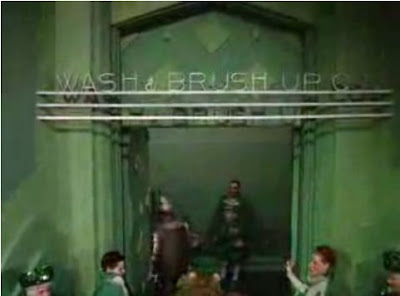It's been a long time since I posted anything (I have a long pretentious post in the works) so, for the moment how about some more great cartoon ghosts!
"The Nut Factory", a Cubby cartoon from 1933, has one of those plot-lines that could have only happened in the early 30's. Cubby is a detective called in to solve the mystery of some missing dentures. He is detoured through a haunted house for some reason (I guess because the footprints led there) before finding out that squirrels have the dentures. Makes sense to me. Love the inverted bowling-pin ghosts!

'gotta match?'

"Ghost Town Frolics", a Meany, Miny, Moe cartoon (mislabeled as an Oswald) from 1938, comes from the most maligned period of the Walter Lantz studio. Although the monkey protagonists are nothing to write home about (the studio had no engaging characters in the late 30's), there are some great ghosts such as the dancing condoms above and some terrific mood.


I love the opening - times are tough in the world of ghosting. Bummer.


Ghosts are bitter.

Dick Huemer had already been gone two years by the time of "Scrappy's Ghost Story" (Mintz Studios 1935) but there continued to be some very good Scrappy cartoons. Among those was this one - a true ghost extravaganza! The following year the series took a plunge in quality unrivaled anywhere else in animation.


The ghosts in this cartoon have a strange doily-like fringe at the bottom and fingers like open sausage casings or some sort of deep sea plant life.


An Iwerks-ian moment. I would love to see a 35 print of this some day ...

Oddly enough, I became familiar with the cartoon's soundtrack before even knowing what it was from. The song "I'm a Ghost" appeared as an unlisted 'hidden' track on the CD "Halloween Stomp" (1990, Jass Records)

a wonderfully atmospheric scene of Oopy dancing in front of the fire.
























